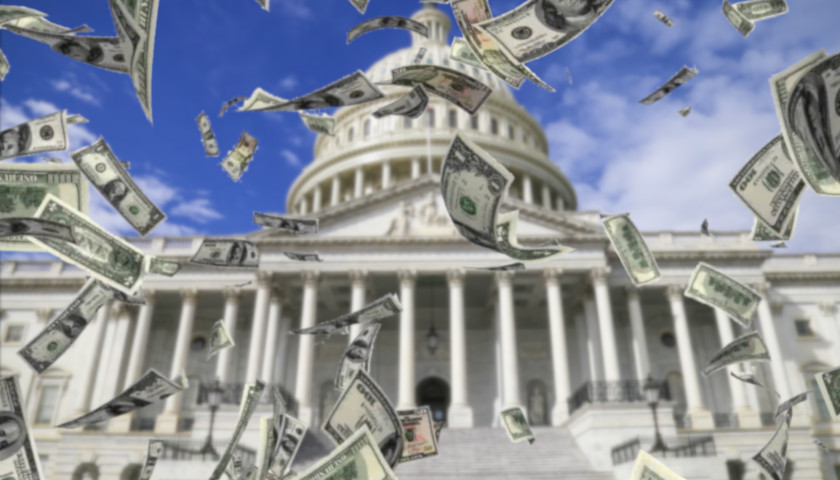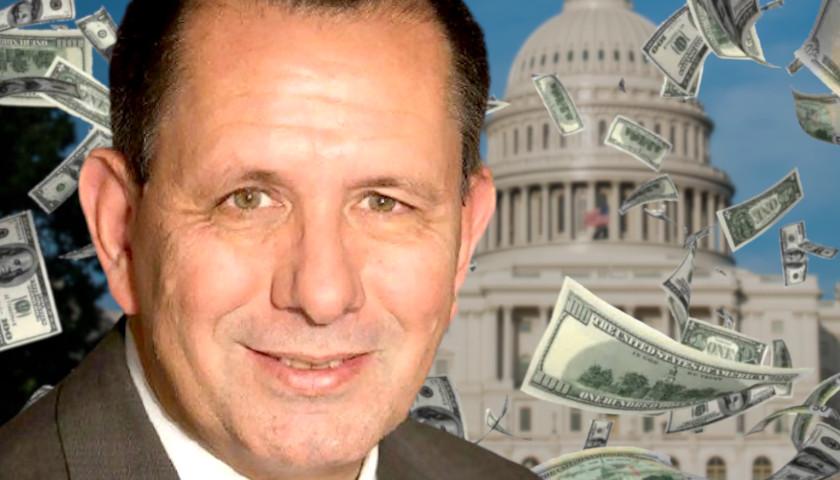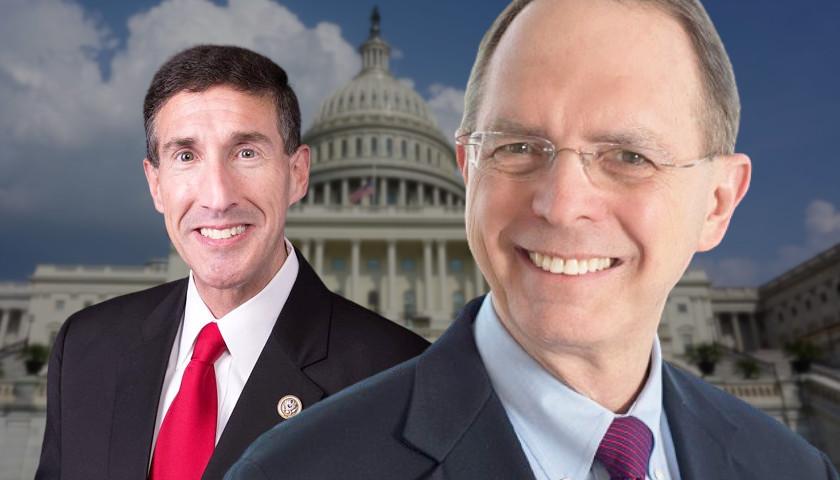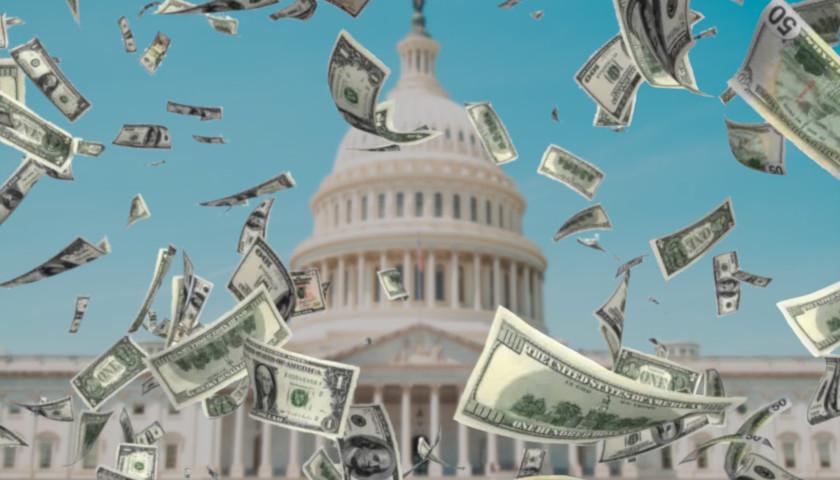by Bethany Blankley
The national debt could be nearly twice the size of the economy by 2048 if steps are not taken to reduce it, a new report released by the nonpartisan Government Accountability Office (GAO) states.
Currently at $22.5 trillion, the national debt refers to direct liabilities of the U.S. government. The U.S. Treasury defines the national debt as public debt (public debt securities issued by the U.S. Treasury), debt held by government accounts, and gross federal debt, comprised of public debt securities and a small amount of securities issued by government agencies.
“Debt held by the public would reach record levels relative to the size of the economy within the next two decades, and possibly as soon as 2032 – just 13 years from now,” according to the GAO. Its projections are based on the continuation of key provisions of the Tax Cuts and Jobs Act (TCJA), which are scheduled to expire in 2025.
GAO’s revenue projections for 2019 through 2029 are based on the Congressional Budget Office’s (CBO) alternative revenue estimates, which assume the TCJA provisions will be extended.
Federal spending is expected to increase significantly, the GAO report states, primarily because of healthcare costs and interest payments owed on the national debt. Both are projected to grow faster than the economy over the next 30 years.
Assuming revenues will remain constant at 17.4 percent of GDP – their 50-year historical average by 2029 – “absent policy changes, the government’s fiscal path is unsustainable,” GAO states.
By 2048, federal spending on healthcare would account for 8.6 percent of the national gross domestic product (GDP), up from 5.4 percent in 2018. Interest payments on the federal debt, would increase from 1.6 percent of GDP in 2019 to 6.7 percent of GDP in 2048, according to GAO projections.
In January, the CBO projected that net interest payments on the national debt would surpass the amount spent on non-defense discretionary budget items in 2024 and on defense discretionary spending in 2025.
“At that point, the government would be spending more on interest than on any single area of the budget,” GAO states.
According to the Peter G. Peterson Foundation, “GAO’s projections add yet another reliable voice raising legitimate concerns about our fiscal position. They join CBO and the Office of Management and Budget in projecting levels of debt that are unsustainable and that result from a fundamental, structural mismatch between spending and revenues.”
The CBO presented 121 policy recommendations to Congress to decrease federal spending or increase federal revenues. Of the 121 options, about 112, if implemented, CBO argues, would save taxpayers $10 billion or more over the next ten years.
“Since 2007, federal debt held by the public has more than doubled in relation to the size of the economy, and it will keep growing significantly if the large annual budget deficits projected under current law come to pass,” the CBO states.
The GAO recommends reducing $141 billion spent on improper Medicare, Medicaid, and Earned Income Tax Credit payments, which account for about 74 percent of all improper payments made by the federal government.
The GAO found that for fiscal year 2017, federal government agencies estimated that about $141 billion was spent on improper payments based on estimates from 90 programs across 21 agencies. The total was down from $144 billion spent on improper payments for fiscal year 2016, and up from $137 billion spent in fiscal year 2015.
“Federal spending for Medicare programs and Medicaid is expected to significantly increase, so it is especially critical to take appropriate measures to reduce improper payments in these programs,” GAO states.
The GAO also recommends that the IRS develop a strategy to close the tax gap, an estimated $458 billion between 2008 and 2010.
The tax gap is the difference between how much taxes are owed and how much are paid on time. According to IRS estimates, taxpayers collectively pay slightly more than 80 percent of the taxes they owe.
The GAO’s findings “are the latest evidence that policymakers should work to manage our debt by making changes to revenues and spending that will improve our fiscal outlook, ensure that we can accommodate future challenges, and invest in the next generation,” according to the Peterson Foundation.
– – –
Bethany Blankley is a contributor to the Center Square.








